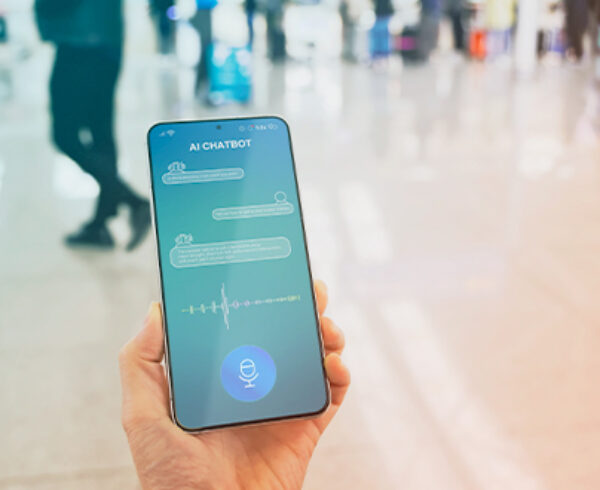Changing sustainability assessments and carbon emissions calculations can impact the way your company does business. Here’s what you need to know about the new carbon emissions categories outlined by ADEME.
Sustainability is becoming a greater concern for businesses around the globe. As such, various companies are taking it upon themselves to both monitor and restrict their carbon emissions. You may, likewise, be thinking that you need to adapt your approach to sustainability in the near future.
In an effort to help organizations better measure — and then address — their carbon emissions, ADEME, the French Environment and Energy Management Agency for Ecological Transition, has proposed a new standard for assessing carbon emissions for organizations across the globe. This new standard is purportedly more precise than prior methods of assessment. The new standard uses what ADEME simply calls its six “emissions categories,” replacing the previously relied upon four broader “scope emissions” categories.
The overall goal of the ADEME emissions categories is to help the planet overall reduce global warming by 0.5 degrees Celsius. This will simultaneously reduce carbon emissions by half. The deadline for this goal? Just six years from now- 2030.
Here’s what you need to know, as the ADEME emissions categories begin to influence organizational actions on a more widespread basis.

What are the ADEME Emissions Categories?
As mentioned, the new ADEME emissions categories are split into six groups. They’re intended to replace the four scope emissions categories previously in use in carbon accounting and by the Greenhouse Gas Protocol.
Under this current system, Scope 1 emissions encompass emissions related to industrial production, vehicle use, and non-renewable energy. Scope 2 emissions encompass emissions from energy consumption. Scope 3 emissions include any outliers. Scope 4 emissions are “avoided emissions,” or the emissions a company reduces outside its value and product chains. Organizations are not required to report Scope 4 emissions, currently.
Let’s see how the newly proposed ADEME emissions categories compare.
ADEME Emissions Category 1
This first category encompasses both mobile and stationary combustion sources. While the category can be further broken down, essentially it applies to all vehicles, processing plants, industrial plants, etc.
ADEME Emissions Category 2
The second category of emissions includes emissions that come about as an indirect result of energy or energy consumption. In addition to including a company’s energy consumption overall, it also includes indirect emissions that stem from renewable energy sources.

ADEME Emissions Category 3
The third of the ADEME emissions categories is all about transportation. While vehicles were included in the first of the ADEME emissions categories, as a mobile combustion source, this category looks at a broader array of transportation-related emissions.
This is the category under which your business travel falls, as well as travel for clients and/or company visitors. Additionally, employee transportation to and from work also falls under this category, as does shipping of goods and products.
ADEME Emissions Category 4
This category is a tricky one. Still, it’s necessary if ADEME’s sustainability goals are to be realized by 2030. ADEME Emissions Category 4 encompasses all the emissions that could come about as a result of a company or organization’s services or products. It also includes the emissions that may result from leased assets. This category is very broad, as you could likely guess.
ADEME Emissions Category 5
Similarly, this category contains the indirect emissions resulting from sold products. However, it also stretches further to likewise bring in the emissions resulting from a company’s investments and other financial decisions.
ADEME Emissions Category 6
Finally, the last of the ADEME emissions categories is a bit of a catch-all. It’s where any emissions go that cannot fit neatly into any of the above five categories.
Are the ADEME Emissions Categories Superior to Other Means of Quantifying Emissions?
There are, of course, other ways of assessing an organization’s emissions. However, the ADEME emissions categories stand out in a few key ways. For one, it’s notable just how thorough and comprehensive the ADEME carbon emissions categories are. For example, the ADEME emissions categories ensure that organizations and companies are tracking emissions related to all seven of the recognized greenhouse gases. These include carbon dioxide, methane, nitrous oxide, hydrofluorocarbons, perfluorocarbons, sulfur hexafluoride and nitrogen trifluoride.
Regardless of superiority or not, though, depending on where you’re located and your regional legislation, as well as the size of your organization (whether you’re an SME or otherwise), using the ADEME emissions categories to calculate your environmental impact may become necessary.
Additional Methods of Calculating Environmental Impact
Over the last few decades, other methods have been used to help organizations calculate their carbon emissions and environmental impacts.
In the early 2000s, ADEME introduced the Bilan Carbone method. This was a bit like a precursor to the new ADEME emissions categories, though not as robust. It does, though, require that organizations using this method also produce an action plan to reduce their emissions, once they use the method to calculate them and gain an understanding of their current status.
Even earlier, in the late 1990s, the GHG Protocol (or Green House Gases Protocol) was used as a more simplified way to track an organization’s emissions. This simplification helped organizations cut down the overall labor and cost necessary to track those emissions. Unfortunately, this simplicity means that GHG Protocol does not thoroughly account for all direct and indirect emissions that a company or organization may be responsible for.

ADEME Can Help Your Employees Reduce Their Emissions on an Individual Level
As you consider the ADEME carbon emissions categories and how they may impact your business in the year ahead, don’t discount how your employees can reduce their emissions on individual levels as well.
ADEME provides various resources to help individuals recognize their own carbon footprints and then adjust their lifestyles accordingly. ADEME notes that most don’t understand their own carbon footprint, underestimate their carbon footprint, or assume that sustainability is an abstract, larger-than-the-individual issue.
Need Help Moving Your Organization into a More Sustainable Future?
If sustainability is a priority for your organization in 2024, JTB Business Travel can help — particularly when it comes to making your business travel more sustainable. Learn more and begin lowering your company’s carbon footprint with your very next trip.













